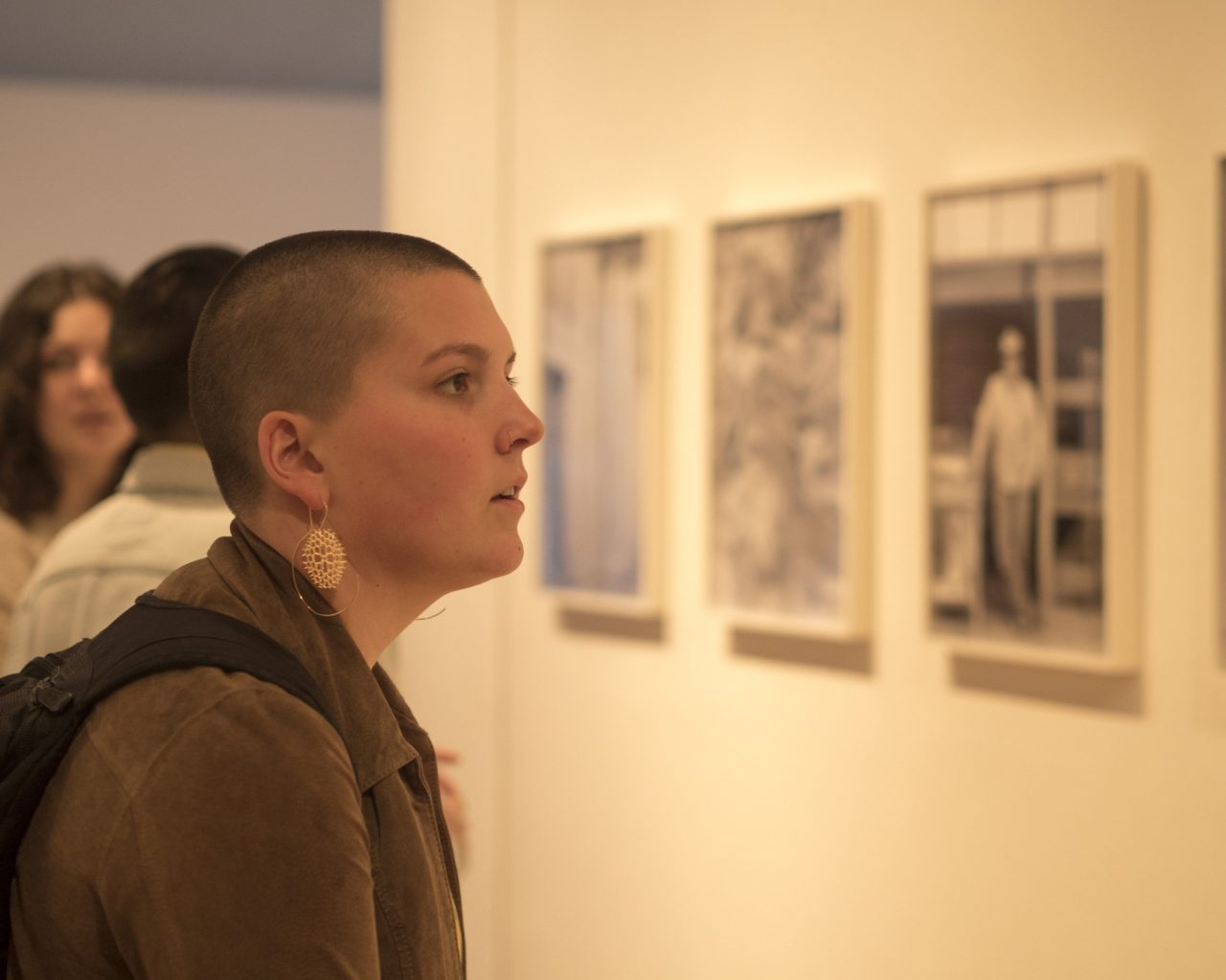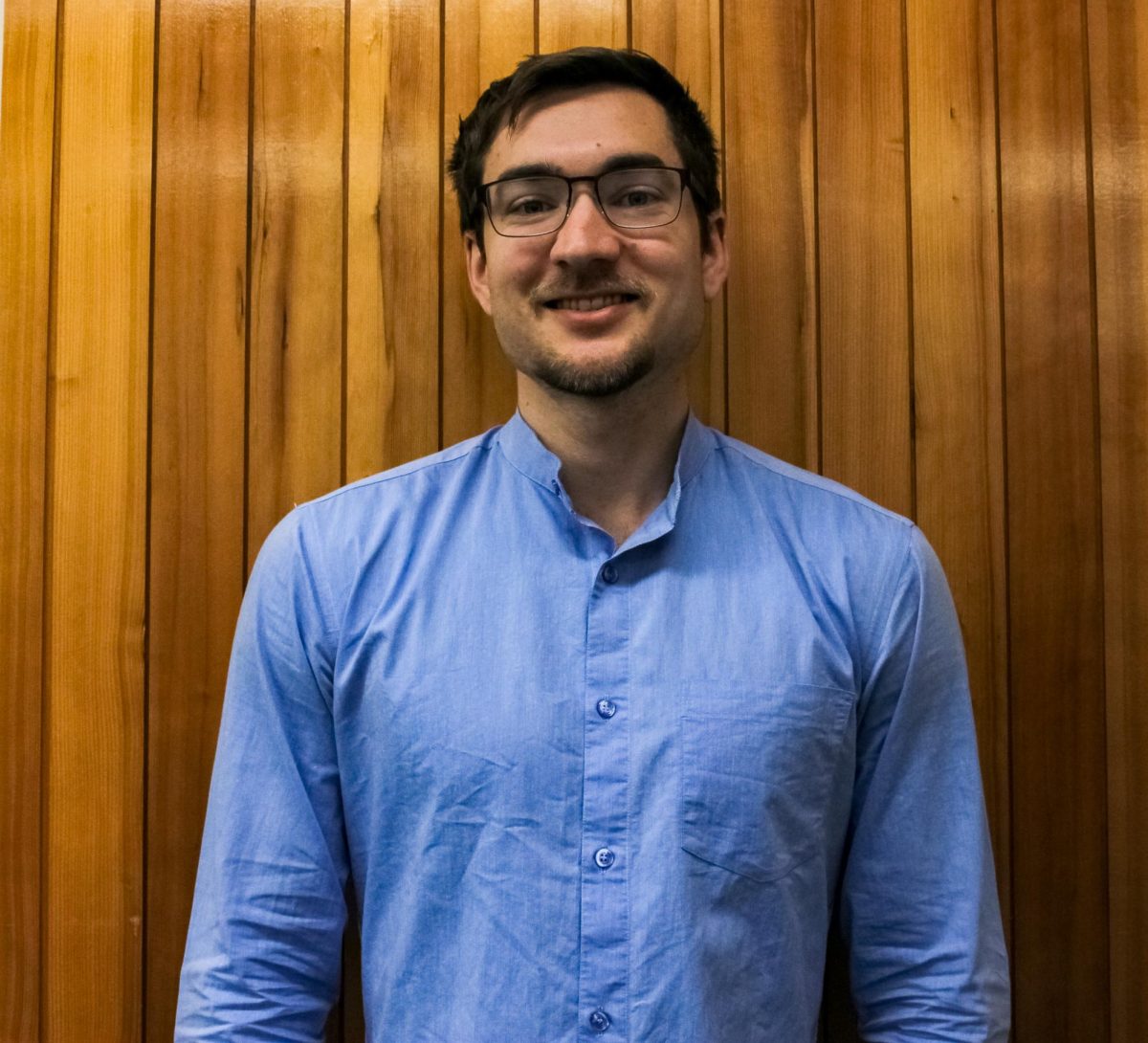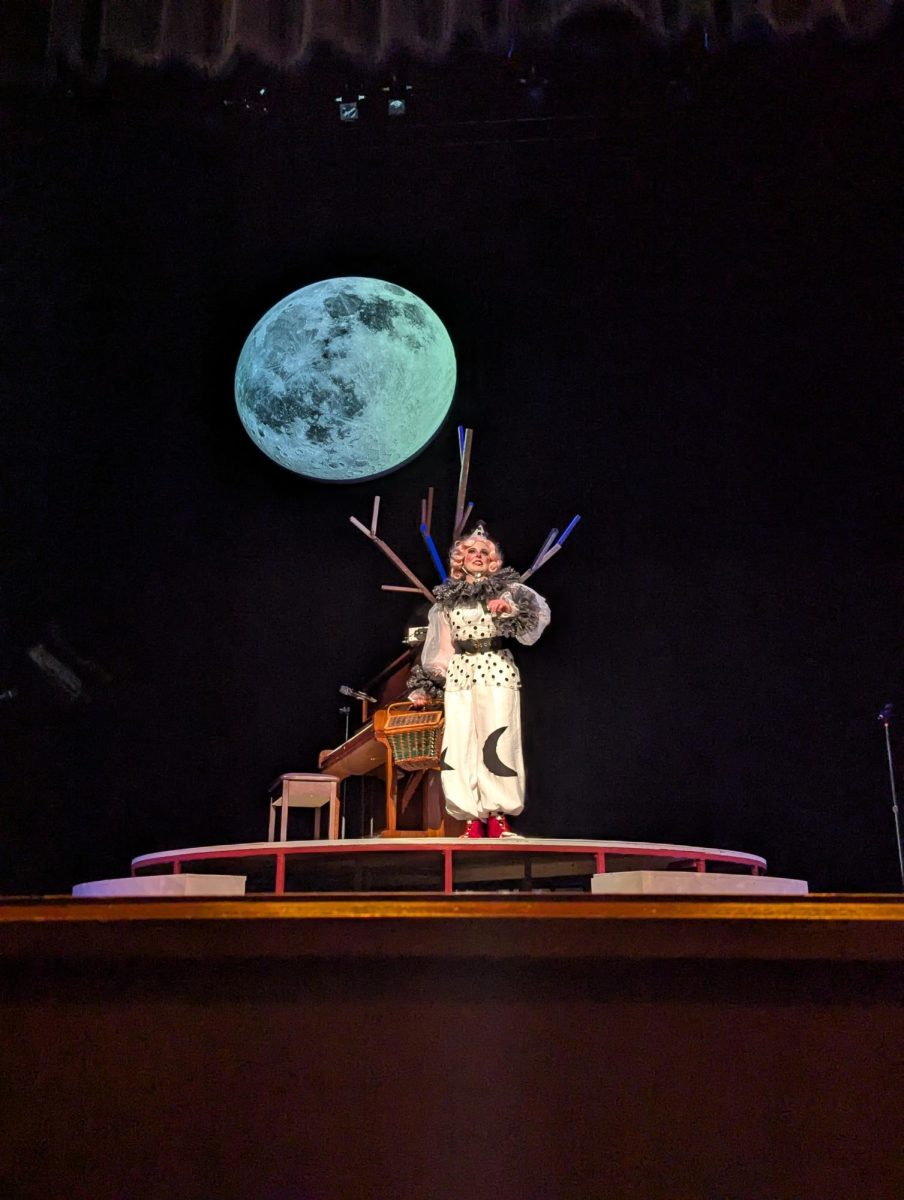Photo by Kathleen Creedon
Seven Trinity art students display their artwork in the Neidorff Gallery Thursday at The Mini’s opening reception. The Mini is a competitive juried student exhibition featuring art by selected Trinity art and art history majors and minors.
This year, 30 Trinity art students submitted proposals for the exhibition. A faculty panel narrowed it down to seven with themes addressing concepts of feminism, memory and loss.
One of the featured artists is Zachary Brock, a senior neuroscience major minoring in studio art. His piece, titled “Does Nature Exist?,” is a series of photographs of middle-class workers, architecture and nature. Brock’s photos focuses on the relationship between human society and the rest of the world. He said the purpose of this body of work was to ponder the effects of human development and incite others to increase their environmental cognizance.
“While this work offers no solutions to the ongoing question of our epoch, it does advocate for the urgent need for our species to create new and meaningful ways to integrate nature within our complex societal structure,” Brock said.
Catherine Phillips — junior and art major — presented “Tourist Trapped,” a mixed media display inspired by the American tourist industry and its relationship with class and race. In the left-hand corner of the exhibit, Phillips’ display featured two walls of photographs, one pillar with a collage of photographs and an object display. Phillips said the variety of mediums was intentional.
“[It’s] supposed to feel chaotic and sprawling, just like one may feel when confronted with travel/otherness in the context of place/tourist traps,” Phillips said.
“I hoped to capture multiple issues, primarily with Latinx individuals often racially stereotyped as migrants as opposed to visitors and the adoption of American Indians as a symbol for Western culture and creators of road side jewelry and trinkets as opposed to being recognized and respected as the indigenous peoples of this land. Nobody belongs in any space, no space is permanent, therefore we are all tourists,” Phillips said.
Natalie Carrier, senior art history major, created a project called “Deritus” and used unconventional mediums to display her artwork. Her piece featured portraits of icons such as Taylor Swift and Kim Kardashian painted on cardboard and drawings on plastic shopping bags.
“The idea was to use found objects associated with waste or garbage and to transform them into artistic ‘artifacts’ of modern society,” Carrier said. “I wanted to get the viewer thinking about broad ideas like our place in history, the constructed distinctions between high and low art and culture and the records and documents that we leave behind.”
According to Carrier, the Mini varied this year from years past. Instead of having a theme or group projects, each participant had their own display section. The larger-than-usual number of entries also makes this year’s Mini explore a more diverse range of topics.
“There ended up being some conceptual overlaps that unified the show quite nicely despite the very different works we showed,” Carrier said.
Phillips added that the pieces are definitely a collective.
“Our pieces all do revolve around questions regarding place, time, loss, memory and social equality. If the viewer views the works in a clockwise direction, the pieces were intentionally laid out to have direct conversations with their neighbors.”
When visiting the exhibit, an aggregate theme of questioning the status quo emerges. Despite many of the pieces being deeply personal projects, many of the artists used the Mini not only as a platform to share their artwork but to promote ideas and inspire broader inquiry.
The Mini is open in the Michael and Noemi Neidorff Gallery of the Dicke Art and Smith Music Building from Jan. 24 until Feb. 7.







